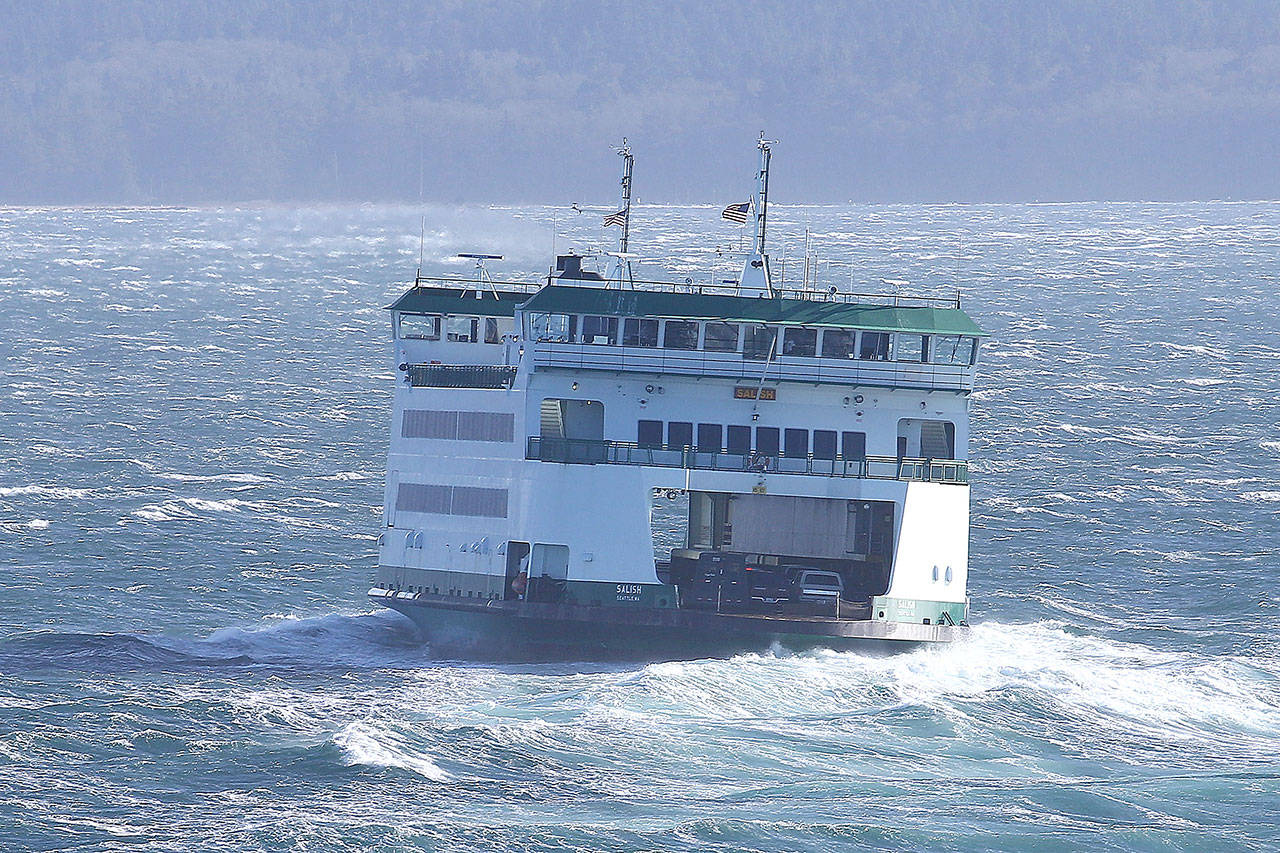Friday the 13th unleashed a powerful storm on Whidbey, resulting in an island-wide electricity outage that lasted over 24 hours for some.
Reports of watercraft capsizing near Central Whidbey and flooding on North and South Whidbey were among the problems caused by the main event.
Wind gusts of up to 50 mph were recorded.
The storm caused a massive power outage that sent people on the North End scrambling over the bridge and those on the South End across the ferry Friday night in search of food, fuel and other supplies.
When they returned, however, it was still lights out for most.
The blackout was caused by fallen trees that took out two sets of transmission lines on North Whidbey near the Deception Pass Bridge, according to Andrew Padula, a spokesperson for Puget Sound Energy.
The first set of lines went down around 11:30 a.m. Friday, he said. The second set of lines, intended as a back-up, also fell within a few hours.
Padula compared the sets of power lines feeding the island electricity to an extension cord — if it gets cut, it’s done.
Power poles and surrounding equipment were also damaged, which complicated repairs. Some of the insulators, which carry the lines, needed to be replaced.
“Our crews transported materials and large transmission poles to the site to make repairs, which takes time,” Padula said. “We were also following proper COVID-19 public health guidelines, which can add to longer restoration times.”
About 37,000 customers on Whidbey Island were without power. Crews worked into the night making repairs and most customers had power restored by Saturday morning.
“Pockets of people,” he said, were without power until Saturday afternoon because of the continuing wind and falling branches creating unsafe conditions.
Freeland residents Bill and Gloria Koll were in an area where the power was out for 26 hours. Power wasn’t restored until around 3 p.m. Saturday, according to Padula.
“It always reaffirms our long-held notion that we absolutely love electricity,” Bill Koll said about the grueling experience.
Gloria said her husband was busy hooking up a neighbor’s generator — and their own — during the storm. The Kolls are long-time Whidbey residents who have grown accustomed to the outages over the years.
Padula said PSE cuts down trees as a way to mitigate storm damage, but it can be hard to pinpoint which trees are most likely to fall when the wind picks up.
“We are constantly working on updating our infrastructure and making sure our infrastructure is reliable,” he said.
Wind gusts on Friday were as high as 54 mph on North Whidbey. Smith Island, to the west of Whidbey, got up to 60 mph.
Meteorologist and UW Professor Cliff Mass said a storm like this isn’t unusual nor early for this time of year.
“This is the stormiest time of the year, mid-November to mid-December,” he said.
“We have good storms into February.”
This year’s predicted weather pattern is La Nina, meaning cooler and wetter weather than normal.
The strongest winds come in from the Strait of Juan de Fuca and affect North and Central Whidbey, Mass said.
“The winds tend to be less strong when you go south,” he said. “That middle part, Ebey’s Landing, that tends to be the place that tends to get the most winds.”




